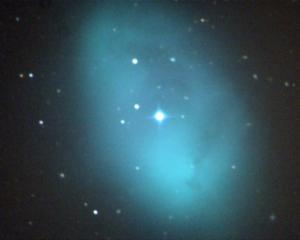The precise moment of this month's full moon occurs at 10.08am next Monday. In Dunedin, moonrise is at 8.10pm. Anyone lucky enough to be located on the ocean side of Otago Peninsula will get marvellous views of our closest celestial neighbour rising over the ocean, writes Ian Griffin.
With the moon visible all night, we can use it as a helpful wayfinder to help explore the constellations of Cetus (the whale or sea monster) and Pisces (the fish).
At 11pm on Monday, the moon is roughly 5deg to the left of the brightest star in Pisces. Arab astronomers named the star Alrescha. It is binary, and if you have a small telescope and high magnification, you should be able to see both components of this double star quite easily.
Uranus is also in this part of the sky. And, although bright moonlight will make it very hard to see, if you have a pair of binoculars, you can try to find it some eight degrees below the moon. Its distinct green colour makes it very obvious in comparison to the background stars. The planet is 2.8 billion kilometres from us.
To the right of Uranus, there is a well-defined ''pentagon'' of stars that make up the head of the constellation Cetus.
According to one legend, Cetus was a monster sent to devour Andromeda, which turned to stone when it saw Medusa's head in the hands of Perseus.
Although Cetus is named after a monster, there is actually something wonderful in this part of the sky.
The star Mira (which can be translated as ''wonderful'') got its name because ancient astronomers were astonished by the way it changed in brightness.
For a few weeks every 11 months, Mira is easily visible to the naked eye, before fading to invisibility. Mira will be bright for the next few weeks (maximum brightness is predicted for October 24), so do try to spot it before it fades.
The star's fluctuations are thought to be caused by instabilities in the atmosphere of this six-billion-year-old red-giant star.











